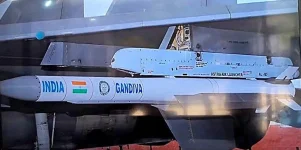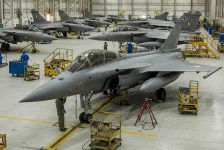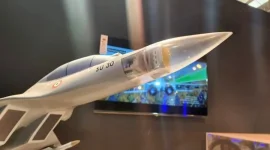- Views: 4K
- Replies: 17

The Indian Air Force (IAF) is set to embark on a significant fleet modernization initiative, starting with the phased retirement of approximately 60 Jaguar aircraft equipped with the DARIN-II avionics suite by 2030-31.
These aircraft, which have served the IAF since the late 1970s, will gradually be replaced by more advanced models as part of the force's ongoing modernization efforts.
The retirement process is expected to begin in 2028, initially targeting older batches of Jaguars acquired through a historic $1 billion deal signed in 1978 with SEPECAT, an Anglo-French company. This deal facilitated the procurement of 160 Jaguars, with the first 40 delivered in a flyaway condition.
Currently, the IAF stands as the sole operator of the Jaguar aircraft globally, with a fleet distributed across six squadrons, each comprising 20 fighters, stationed in Ambala, Jamnagar, and Gorakhpur. Renowned for their role as "deep penetration strike aircraft," the Jaguars have played a crucial role in the IAF's strategic capabilities for decades.
As the IAF progresses towards modernizing its fleet, the focus is shifting towards the more advanced DARIN-III configuration. The upgraded Jaguars are equipped with the EL/M-2052 radar, provided by the Israeli company Elta.
This radar boasts an "active electronically scanned array" (AESA), significantly enhancing the aircraft's combat capabilities. Furthermore, the integration of the Advanced Short Range Air-to-Air Missile (ASRAAM) substantially boosts the aircraft's close-combat effectiveness.
The Jaguars equipped with DARIN-III and the EL/M-2052 AESA radar are projected to remain operational until 2035-36. Currently, 60 Jaguars, constituting half of the IAF's fleet, are undergoing these upgrades.
This modernization endeavor ensures that despite the phased retirement of older DARIN-II Jaguars, the IAF will retain a formidable deep penetration strike capability with the advanced DARIN-III equipped aircraft.




